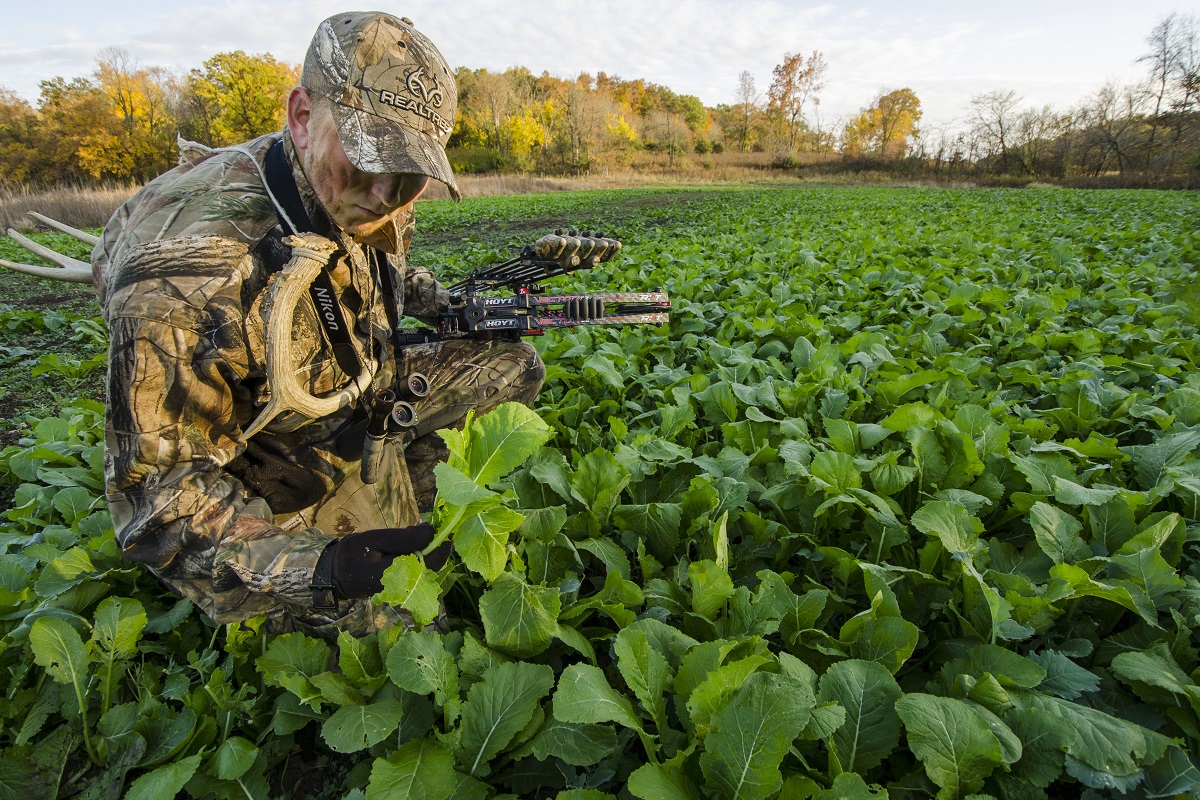Procrastination is defined as the action of delaying or postponing a task which needs to be accomplished. It’s something us humans are remarkably good at, and while it may have gotten you through high school and college, it will not favor the food plotter. Every year around the end of August, I start to get a handful of emails and phone calls asking if it’s too late to plant food plots. My initial reaction is always the same and goes something like this, “Why didn’t you ask this question a month ago!”.
Fall hunting season always sneaks up on us – one minute it feels like an eternal wait, and all of a sudden that wait turns into one week away with so much to do. Unlike hanging treestands, planting food plots isn’t something you can typically do during an evening after work. I’m sure you know food plots take time and prep, so let’s get to the question that likely landed you on this page.

Is it too late to plant a food plot?
The short answer is it depends. Here in the upper Midwest (Minnesota, Wisconsin, Michigan), fall food plots need to be planted no later than the week before Labor Day, and preferably around the first of August. Anything after that and you’re really betting on Mother Nature to be in your favor. The biggest determining factor is when will the first frost occur or as I call it, DUFF (days-until-first-frost). The next biggest factor is what will you be planting and the final factor is when will it rain.
Fall Planting Dates Rely on Average First Frost Dates
You may see generic planting dates printed on a food plot seed bag or on a seed manufacturer’s website and wonder how they determined them. Quite simply, they are determined according to the average first frost date in your area. Most fall food plot forages, and I’ll emphasize most, need somewhere around 45-60 days to grow before the first frost.
Often times seed manufactures will give you a fairly wide range of acceptable days to plant, but just because it says you can plant on “September 15th” doesn’t mean you should. While they may be trying to add a few late-season sales, the seed companies aren’t necessarily trying to trick you, but rather they don’t have the space or resources to give you the exact planting dates for your specific region. This can get you into a bit of trouble, especially in the north. For instance, Seed Company X has the entire state of Wisconsin and Michigan color coded the same to match up with a specific range of planting dates. Anyone who lives in these states can tell you that the first frost occurs much earlier in the northern parts of the states than the southern, so if you plant towards the end of Seed Company X’s recommended planting dates in the North, you will likely be very disappointed.
The best way to figure out the planting dates for your specific area is to visit this Old Farmer’s Almanac Link and type in your zip code. The date it spits out as “First Fall Frost” what you should use to backdate 45-60 days from to get the optimal planting dates for your specific area. For example, the average first frost date for my area is October 4th, this would mean I should plant between August 4th (60 days) and August 20th (45 days) for optimal growth. Anything after August 20th would be leaving it to chance. I should also note you don’t want to plant too early, either. If you plant too early, there’s a chance the plot will over mature and become unattractive. Whitetails like young growth and the 45-60 DUFF planting window will give you just that.
What do you plan on planting?
The second factor that will determine if you still have time to plant is the specific type of forage are you planning to use. Typical fall food plot forages include brassicas (turnips, kale, radishes), oats, rye, winter peas, and winter wheat. These are all cool season annuals that grow quickly, hence why they are planted during the late-summer and early-fall. That being said, some grow faster than others and will be better for those who procrastinate.

For the fruit/bulb bearing forages like brassicas and winter peas, it’s best to plant them closer to the 60 DUFF mark. If you’re late to the food plotting game and running out of time, I’d recommend planting your plot with oats and/or rye. Both are very hardy plants that grow fast and provide plenty of nutritional forage. This would be my go-to planting if I was under the 45-days-until-first-frost (DUFF) planting deadline. If you get a decent rain shortly after planting, followed by some warm weather, these seeds can crank out some serious forage in less than a month.
Soil Moisture and Rain
The final factor relates to how fast your food plots will germinate. If you’re running late, every day of growth is crucial. Remember, days are getting shorter at a rapid pace and fewer hours of sunlight equals slower growth rates. If you’re planting with less than 45 DUFF and there’s no rain forecasted for the next two weeks, you’re essentially counting on 30 growing days because the seed won’t germinate if there’s no soil moisture. If you can, wait until the radar shows good odds of rain before you plant.
In the end Mother Nature determines when the first frost will occur and when the rains will fall. Sometimes all you can do is hope and pray. If you can’t get your food plots planted before the 30 days-until-first-frost (DUFF) mark, I’d recommend throwing in the towel and waiting until next year.







